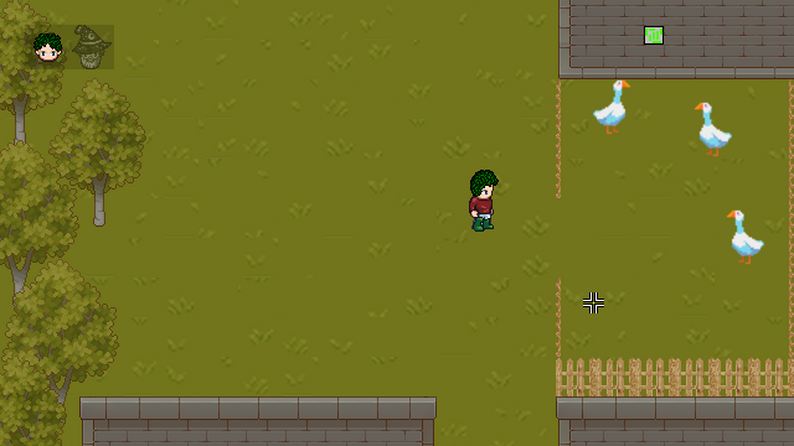20 years ago I made 3 games using the AGS engine, this trilogy was about a magician named Melrin.
I also had plans for a 4th game that took place before the original trilogy, but work got in the way and I never finished that game.
Until now!
Well, it's not finished yet but it's in development, and it's called Betrayal of the Crown.
The Story
There has been an assassination attempt on the King, and the main suspect is the King's brother Prince Eevail, however, the King himself doesn't want to believe that his own brother would try to do something like this.
So the Magician Council of the land decides to send out one of their prominent wizards, Alfrin, to investigate the crime. However, during the planning, someone broke into Alfrin's house and ripped out all the pages of his book of spells, without them he can't perform his magic. This act of thievery reveals that there is a spy within the Magician Council.
So Alfrin asks his disciple to follow him along on his journey, their task is to find the missing pages of Alfrin's book, find out who the spy within the council is, and find evidence that the Prince is responsible so they can convince the King.
Playing the game
So this game has two playable characters and you can freely switch between them. The left mouse button, except for walking around, does all the main interactions, Talk to/Open/Pick-up, and so on, while the right mouse button means "Look At".
Progress
* Graphics ~85%
* Puzzles ~50-60%
* Scripting ~60%
* Music 0%
* Sound Effects ~75%
I have a demo available, it contains parts 1 and 2 of one of the characters and part 1 of the other in this 3-part game. The Demo is fully playable and you will be told when you've reached the end of it.
A Web and Windows version is available:
https://brixoft.itch.io/betrayal
Password: Pnc4dvBoC
Screen shots



I also had plans for a 4th game that took place before the original trilogy, but work got in the way and I never finished that game.
Until now!
Well, it's not finished yet but it's in development, and it's called Betrayal of the Crown.
The Story
There has been an assassination attempt on the King, and the main suspect is the King's brother Prince Eevail, however, the King himself doesn't want to believe that his own brother would try to do something like this.
So the Magician Council of the land decides to send out one of their prominent wizards, Alfrin, to investigate the crime. However, during the planning, someone broke into Alfrin's house and ripped out all the pages of his book of spells, without them he can't perform his magic. This act of thievery reveals that there is a spy within the Magician Council.
So Alfrin asks his disciple to follow him along on his journey, their task is to find the missing pages of Alfrin's book, find out who the spy within the council is, and find evidence that the Prince is responsible so they can convince the King.
Playing the game
So this game has two playable characters and you can freely switch between them. The left mouse button, except for walking around, does all the main interactions, Talk to/Open/Pick-up, and so on, while the right mouse button means "Look At".
Progress
* Graphics ~85%
* Puzzles ~50-60%
* Scripting ~60%
* Music 0%
* Sound Effects ~75%
I have a demo available, it contains parts 1 and 2 of one of the characters and part 1 of the other in this 3-part game. The Demo is fully playable and you will be told when you've reached the end of it.
A Web and Windows version is available:
https://brixoft.itch.io/betrayal
Password: Pnc4dvBoC
Screen shots




